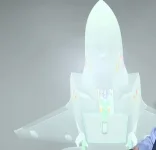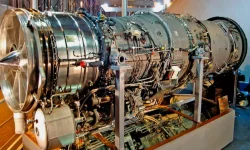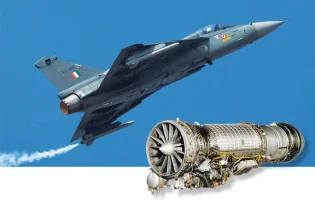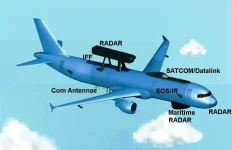- Views: 2K
- Replies: 3
Recent images have revealed a significant design evolution in India's ambitious fifth-generation fighter jet programme, the Advanced Medium Combat Aircraft (AMCA).
The updated graphics show a redesigned housing for the aircraft's Infrared Search and Track (IRST) system, which has been moved to a central position on the fuselage.
This modification is a critical step forward, aimed at improving the aircraft's stealth capabilities and the operational efficiency of its sensors.
The AMCA is being developed by the Aeronautical Development Agency (ADA) in partnership with Hindustan Aeronautics Limited (HAL) to serve as a versatile, stealthy fighter for the Indian Air Force (IAF).
A key characteristic of fifth-generation aircraft is their low-observable or "stealth" design, which minimises their detectability by enemy radar.
The latest design change directly enhances this feature by repositioning the IRST sensor and removing its previous external casing, which reduces the aircraft’s overall Radar Cross-Section (RCS).
An IRST is a passive sensor system that detects and tracks hostile targets by sensing the heat they emit, allowing the AMCA to identify enemy aircraft, missiles, or drones from distances often exceeding 100 kilometres without revealing its own position by emitting a radar signal.
By aligning the sensor on the aircraft's centreline and exposing only the essential electro-optical head, the new design creates a smoother, more aerodynamic profile. This not only makes the aircraft harder to detect but also reduces drag, contributing to better speed and fuel efficiency.
This strategic placement enhances the AMCA's combat effectiveness, especially in air-to-air engagements.
The central location provides the IRST with a superior field of view, which, when integrated with a network of other sensors known as the Distributed Aperture System (DAS), offers the pilot a comprehensive 360-degree view of the battlespace.
This system works in conjunction with the jet's Electro-Optical Targeting System (EOTS), located under the nose, which is used for identifying and targeting ground objectives with high precision.
This fusion of advanced sensors solidifies the AMCA's role as a potent platform for both air superiority and ground attack missions.
This advancement is part of a wider effort to equip the AMCA with state-of-the-art, indigenously developed technology.
Data gathered from the IRST, EOTS, and DAS will be fused with information from the Indian-made Uttam Active Electronically Scanned Array (AESA) radar.
This integrated data provides the pilot with unparalleled situational awareness, enabling the precise deployment of advanced weaponry such as the Astra series of air-to-air missiles and the Rudram anti-radiation missile.
The AMCA programme achieved a major milestone earlier this year when India's Cabinet Committee on Security (CCS) sanctioned approximately ₹15,000 crore for the development of five prototypes.
The project timeline aims for a first flight between 2027 and 2028, with series production anticipated to commence by 2035.
The project emphasizes self-reliance, with over 70% of the AMCA's components, including its sophisticated sensor suite, being sourced from Indian private and public sector firms like Bharat Electronics Limited (BEL) and the Defence Research and Development Organisation (DRDO).
This IRST redesign highlights the commitment of India's defence sector to refining the aircraft's capabilities.





